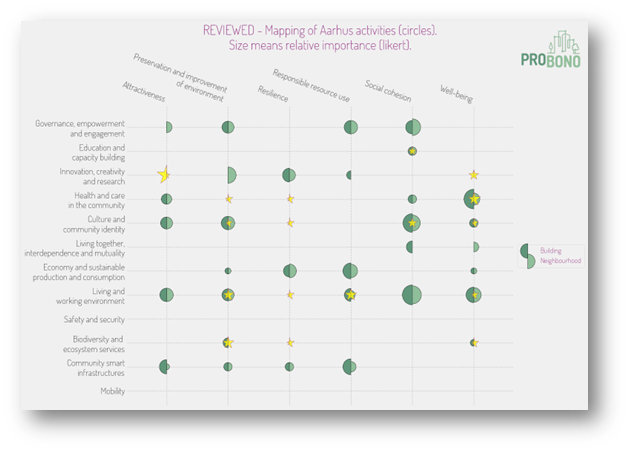Consistent Green Building Neighbourhood approaches: Using an AI-Powered Mapping Tool for Sustainable Neighbourhoods
- salimaismayilzada
- May 7, 2024
- 2 min read
Updated: May 24, 2024
by Luc Jonveaux
The quest for sustainability in the urban space is more pressing than ever. As complex cities worldwide strive to become greener and more liveable, standards are an option for guidance. Green Building Neighbourhoods (GBNs) , are an initiative that the PROBONO H2020 project is developing to assess the feasibility of an innovative tool that leverages the ISO37101 framework, employing Artificial Intelligence (AI) and Large Language Models (LLMs) to transform how city stakeholders can envision, implement and accelerate the wide variety of green and sustainable initiatives to suit their local context and needs.

One of the challenges of neighbourhood initiatives is to account for the diversity of stakeholders, angles and options to approach and how the GBNs can simplify and coordinate this. After careful review, the ISO37101 standard seems to offer a comprehensive framework designed to guide the development of sustainable and resilient communities. It encompasses the six core purposes of sustainability, supported by actions under twelve critical domains of action. This structured approach provides a robust map for aligning initiatives with the overarching goals of sustainability and resilience.
And since the standard does provide a strongly defined approach, this makes the use of LLMs an attractive option to automatically map out visions and strategies of cities, in parallel to the initiatives, solutions, and technologies, whatever form (technology, social innovation, nature-based) or sector (energy, mobility, ..) - offering a clear visualization of how each initiative contributes to the broader objectives to support GBN development. It does not only save time but also ensures accuracy and comprehensiveness in capturing the different components of sustainable urban planning.
Its ability to facilitate informed discussions among GBN stakeholders is the primary objective of this solution: by visually mapping out initiatives, stakeholders of any type can easily assess whether their collective vision aligns with the actual initiatives in place. This alignment check is crucial for identifying gaps, redundancies, or misalignments in the current strategy, thereby supporting more coherent and focused roadmap towards sustainability.

An opportunity of this approach is also its capacity to create a common approach, enabling standardised mapping, possibly encompassing initiatives from various sectors and regions around the globe. This collective effort under an internationally recognised framework can not only facilitate benchmarking but also encourages the exchange of innovative solutions across different GBNs: by learning from the successes and challenges of others, communities can adapt and integrate new strategies, fostering a collaborative approach to sustainable urban development, using for example a serious game approach, depicting our demonstrators and innovation.
This GBN-based solution, at the intersection of not only standards and digital innovation, but natural and social innovations, represents an interesting advancement in community, neighbourhood and city planning. This tool not only enhances the efficiency and efficacy of planning processes but also promotes a more interconnected and collaborative approach to building sustainable communities.




Comments